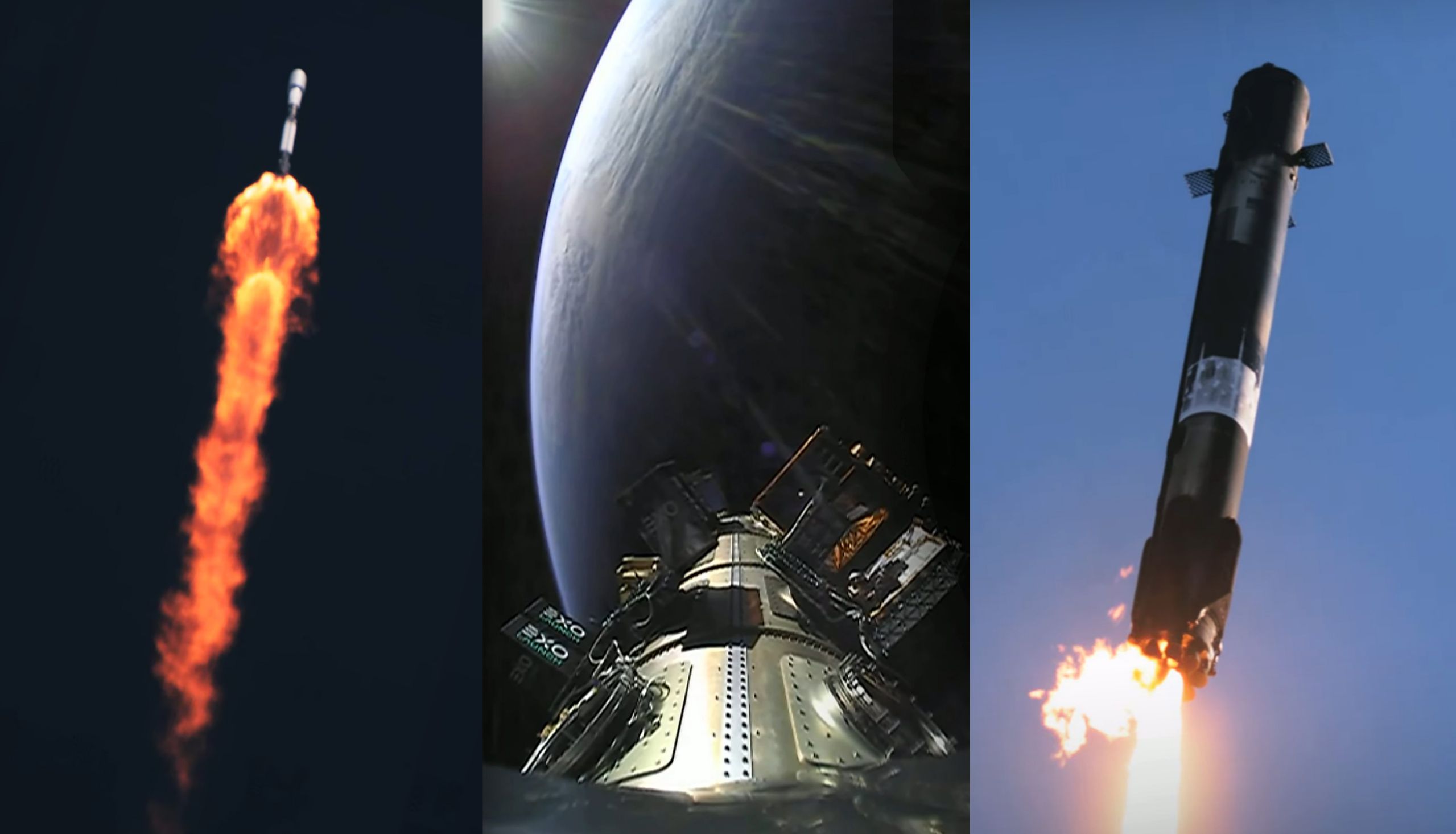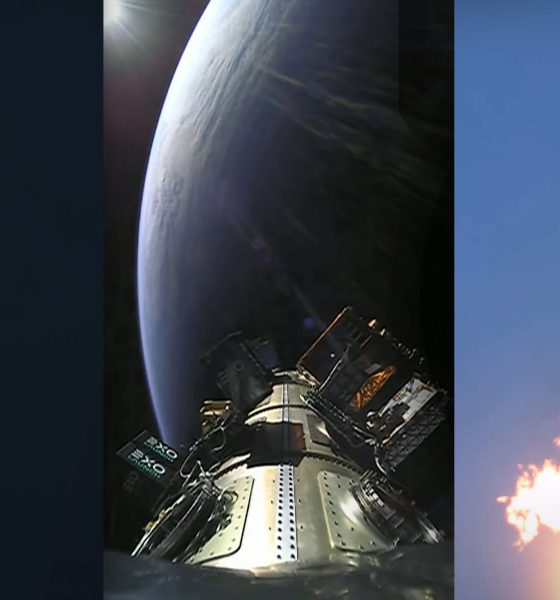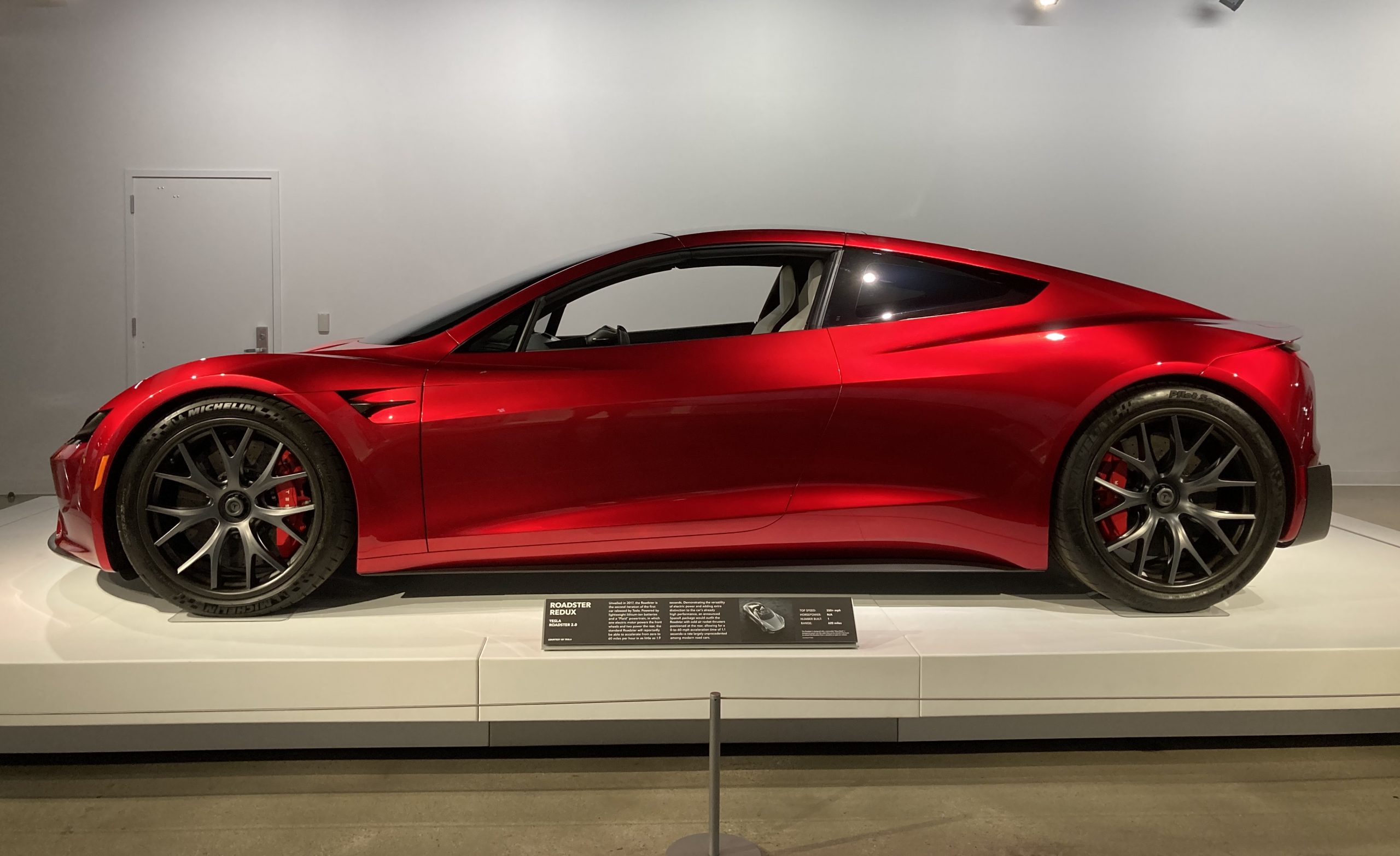

News
SpaceX kicks off 2023 with second largest rideshare launch
After rounding out 2022 with the world’s last orbital launch, SpaceX has kicked off 2023 with the new year’s first orbital launch – also the second-largest rideshare mission in history.
At 9:56 am EST (14:56 UTC), a SpaceX Falcon 9 rocket lifted off on Transporter-6, the sixth dedicated launch under the company’s Smallsat Rideshare Program. SpaceX says Transporter-6 deployed 114 payloads for dozens of paying customers, making it the second-largest rideshare mission ever launched. In addition, marking the latest apogee of a growing cottage industry largely enabled by SpaceX’s affordable and regular rideshare launch services, Transporter-6 carried an unprecedented number of ‘space tugs’ developed by five separate companies.
The update that's rolling out to the fleet makes full use of the front and rear steering travel to minimize turning circle. In this case a reduction of 1.6 feet just over the air— Wes (@wmorrill3) April 16, 2024
At a minimum, Transporter-6’s expansive payload roster included Launcher’s first Orbiter space tug, Epic Aerospace’s first CHIMERA space tug, Momentus Space’s second Vigoride space tug, and two D-Orbit ION space tugs. While their capabilities vary significantly, all of the space tags or transfer vehicles manifested on the mission have a similar purpose: transporting satellites launched as rideshare payloads from their rocket’s one-size-fits-all parking orbit to an orbit more optimized for each spacecraft’s mission.
In theory, that concept could eventually take the shape of a service that lets operators send their satellites to a wide variety of orbits and still take advantage of the savings enabled by rideshare launches – particularly from SpaceX. But that time has not quite come. At the moment, only a few providers have successfully demonstrated space tugs with propulsion systems, and most of those proven options only allow for small orbit tweaks. One tug built by Spaceflight has partially demonstrated the ability to climb from ~300 kilometers to more than 1000 kilometers. Rocket Lab’s Electron kick stage is arguably the most successful in low Earth orbit, and the company has also shown that Photon – an upgraded version of that kick stage – can send payloads to high Earth orbits or even the Moon.
Future tugs could enable routine changes on the order of hundreds or even thousands of kilometers for multiple payloads per flight. Many prospective providers – including Momentus and Epic – hope to follow up their simpler prototypes (and follow in Rocket Lab’s footsteps) with tugs capable of carrying satellites to high Earth orbits, the Moon, and deep space.
SpaceX’s Transporter missions and the space tugs that frequent them all serve the same purpose: getting satellites where they need to go for a diverse range of customers. And Transporter-6 deployed a number of interesting payloads. In partnership with Nanoavionics, French startup Gama launched its first solar sail prototype in the hopes of one day lowering the cost of deep space propulsion and exploration. Momentus will get a second opportunity to demonstrate its Vigoride tug, which is powered by an exotic water plasma propulsion system. Spire launched the first prototypes of an upgraded satellite bus. Orbital Sidekick launched its first Earth observation satellite. Lynk Global launched an in-space cell tower to test the ability to broadcast 5G from space to the ground. Australian startup Skykraft launched its first batch of Block 2 air traffic management satellites and will deploy them with its own free-flying “Deployer 1” – essentially a space tug without propulsion. Planet launched dozens of new SuperDove Earth-imaging satellites. And Ukrainian startup EOS launched Agrisat-1, the country’s first commercial satellite.
Following Transporter-6, SpaceX’s Smallsat Rideshare Program has launched approximately 566 payloads in less than two years. In addition, SpaceX has launched more than 3600 of its own Starlink satellites since November 2019 for a total of well over 4000 satellites launched in a little over three years.
Prior to the end of 2022, SpaceX had never launched a rocket later than December 23rd or earlier than January 6th. That odd gap finally fell at the end of SpaceX’s record-breaking 2022 performance, which saw the company ace 61 Falcon launches in a single calendar year. Transporter-6 will be SpaceX and the world’s first launch of 2023. Never one to stand still, CEO Elon Musk has set SpaceX a target of “up to 100 launches” in the new year.
Rewatch SpaceX and the world’s first orbital launch (and rocket landing) of 2023 below.

Investor's Corner
Tesla gets price target bump, citing growing lead in self-driving

Tesla (NASDAQ: TSLA) stock received a price target update from Pierre Ferragu of Wall Street firm New Street Research, citing the company’s growing lead in self-driving and autonomy.
On Tuesday, Ferragu bumped his price target from $520 to $600, stating that the consensus from the Consumer Electronics Show in Las Vegas was that Tesla’s lead in autonomy has been sustained, is growing, and sits at a multiple-year lead over its competitors.
CES 2026 validates Tesla’s FSD strategy, but there’s a big lag for rivals: analyst
“The signal from Vegas is loud and clear,” the analyst writes. “The industry isn’t catching up to Tesla; it is actively validating Tesla’s strategy…just with a 12-year lag.”
The note shows that the company’s prowess in vehicle autonomy is being solidified by lagging competitors that claim to have the best method. The only problem is that Tesla’s Vision-based approach, which it adopted back in 2022 with the Model 3 and Model Y initially, has been proven to be more effective than competitors’ approach, which utilizes other technology, such as LiDAR and sensors.
Currently, Tesla shares are sitting at around $433, as the company’s stock price closed at $432.96 on Tuesday afternoon.
Ferragu’s consensus on Tesla shares echoes that of other Wall Street analysts who are bullish on the company’s stock and position within the AI, autonomy, and robotics sector.
Dan Ives of Wedbush wrote in a note in mid-December that he anticipates Tesla having a massive 2026, and could reach a $3 trillion valuation this year, especially with the “AI chapter” taking hold of the narrative at the company.
Ives also said that the big step in the right direction for Tesla will be initiating production of the Cybercab, as well as expanding on the Robotaxi program through the next 12 months:
“…as full-scale volume production begins with the autonomous and robotics roadmap…The company has started to test the all-important Cybercab in Austin over the past few weeks, which is an incremental step towards launching in 2026 with important volume production of Cybercabs starting in April/May, which remains the golden goose in unlocking TSLA’s AI valuation.”
Tesla analyst breaks down delivery report: ‘A step in the right direction’
Tesla has transitioned from an automaker to a full-fledged AI company, and its Robotaxi and Cybercab programs, fueled by the Full Self-Driving suite, are leading the charge moving forward. In 2026, there are major goals the company has outlined. The first is removing Safety Drivers from vehicles in Austin, Texas, one of the areas where it operates a ride-hailing service within the U.S.
Ultimately, Tesla will aim to launch a Level 5 autonomy suite to the public in the coming years.
Elon Musk
Elon Musk’s Biggest Revelations on AI, Robots, and the Future of Work from the Moonshots Podcast

Elon Musk’s appearance on the Moonshots with Peter Diamandis podcast was packed with bold predictions, candid admissions, and surprising tech insights. The nearly three-hour conversation covered everything from artificial intelligence to humanoid robots, geopolitics, and the future of work. Here are the top 10 most intriguing takeaways:
-
Aggressive AGI Timeline Predictions
Musk offered a detailed view on when artificial general intelligence (AGI) could emerge, suggesting it may arrive sooner than many expect, emphasizing both transformative potential and risks.
-
U.S. vs. China in the AI Race
He discussed the strategic competition between the United States and China over AI development, noting that geopolitical dynamics will shape how and who leads in the next decades.
-
Future of Job Markets
Musk touched on how AI and automation could reshape employment, predicting massive boosts in productivity alongside potential disruptions in traditional work structures.
-
Clean Energy Transition
A recurring theme was the role of clean energy in future economies, with Musk reiterating the importance of scaling sustainable power generation and storage.
-
Humanoid Robots Are Coming
On the podcast, Musk elaborated on Tesla’s work on humanoid robots, hinting at timelines and applications that go beyond factories to general-purpose assistance.
-
Tesla Roadster “Last Human-Driven Car”
Outside the core discussion topics, Musk teased features of the upcoming Tesla Roadster — calling it “the best of the last of the human-driven cars” and suggesting safety won’t be its main selling point.
-
The Role of AI in Clean Energy and Robotics
Linking AI to both energy optimization and robotics, Musk explained how smarter systems could accelerate decarbonization and task automation across industries.
-
U.S. Innovation Leadership
Musk argued that maintaining American leadership in key tech sectors like AI, space, and robotics should be a national priority, with thoughtful policy and investment.
-
Job Creation vs. Job Elimination
While acknowledging automation’s disruptive effects, he also outlined scenarios where new industries and opportunities could emerge, particularly in AI, space, and advanced manufacturing.
-
Long-Term Vision for Humanity
Throughout the conversation, Musk revisited his long-term philosophical views — including a belief in humanity’s responsibility to become a multi-planetary and technologically empowered species.
Whether you agree with Musk’s optimism or not, the podcast offers a window into the thinking of one of the most influential figures in tech today, in and why his visions continue to spark debate and inspiration.
Elon Musk
Elon Musk just said some crazy stuff about the Tesla Roadster

Elon Musk appeared on the Moonshots podcast with Peter Diamandis today to discuss AGI, U.S. vs. China, Tesla, and some other interesting topics, but there was some discussion about the upcoming unveiling of the Roadster, the company’s electric supercar that will arrive several years after it was initially slated for release.
Musk made some pretty amazing claims about the Roadster; we already know it is supposed to be lightning-fast and could even hover, if Tesla gets everything to happen the way it wants to. However, the car has some pretty crazy capabilities, some of which have not even been revealed.
On the podcast, Musk said:
“This is not a…safety is not the main goal. If you buy a Ferrari, safety is not the number one goal. I say, if safety is your number one goal, do not buy the Roadster…We’ll aspire not to kill anyone in this car. It’ll be the best of the last of the human-driven cars. The best of the last.”
🚨 Elon on the Roadster unveiling, scheduled for April 1:
— TESLARATI (@Teslarati) January 6, 2026
Musk makes a good point: people who buy expensive sports cars with ridiculous top speeds and acceleration rates do not buy them to be safe. They hope they are safe in case of an emergency or crash, but safety is not at the forefront of their thoughts, because nobody buys a car thinking they’ll crash it.
The Roadster is truly going to push the limits and capabilities of passenger vehicles; there’s no doubt about that. Tesla plans to show off the new version car for the first time on April 1, and Musk has only hinted at what is possible with it.
Musk said back in November:
“Whether it’s good or bad, it will be unforgettable. My friend Peter Thiel once reflected that the future was supposed to have flying cars, but we don’t have flying cars. I think if Peter wants a flying car, he should be able to buy one…I think it has a shot at being the most memorable product unveiling ever. [It will be unveiled] hopefully before the end of the year. You know, we need to make sure that it works. This is some crazy technology in this car. Let’s just put it this way: if you took all the James Bond cars and combined them, it’s crazier than that.”
Production is set to begin between 12 and 18 months after the unveiling, which would put the car out sometime in 2027. Hopefully, Tesla is able to stay on track with the scheduling of the Roadster; many people have been waiting a long time for it.








